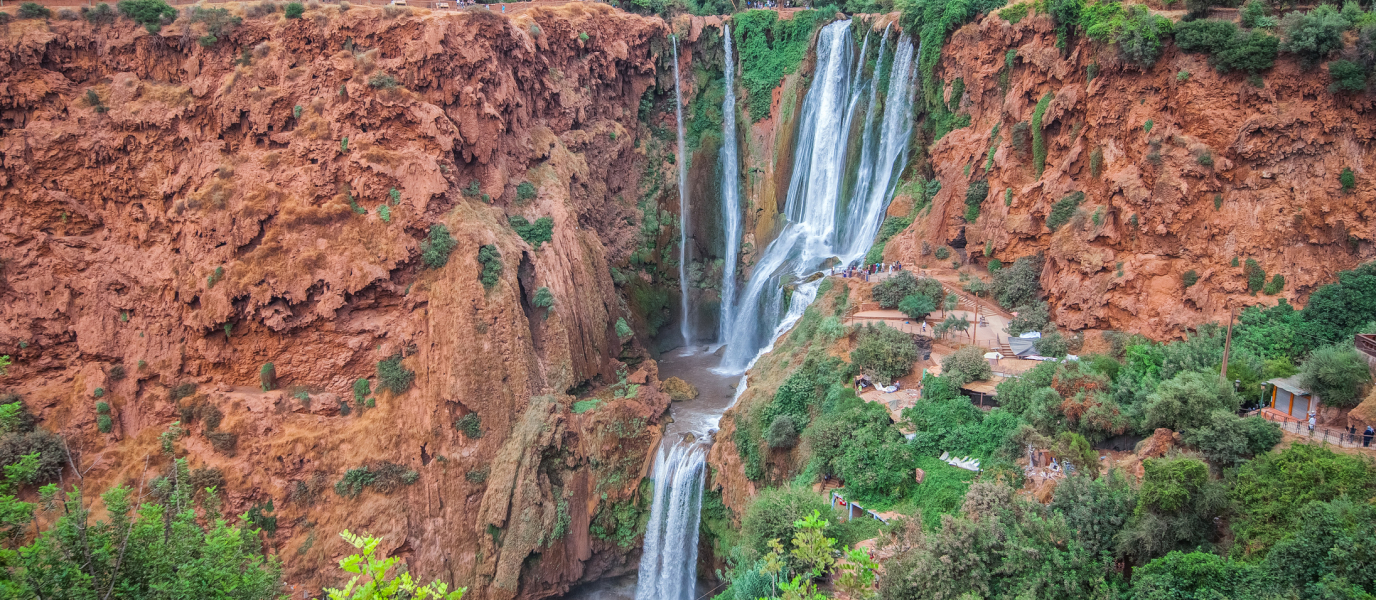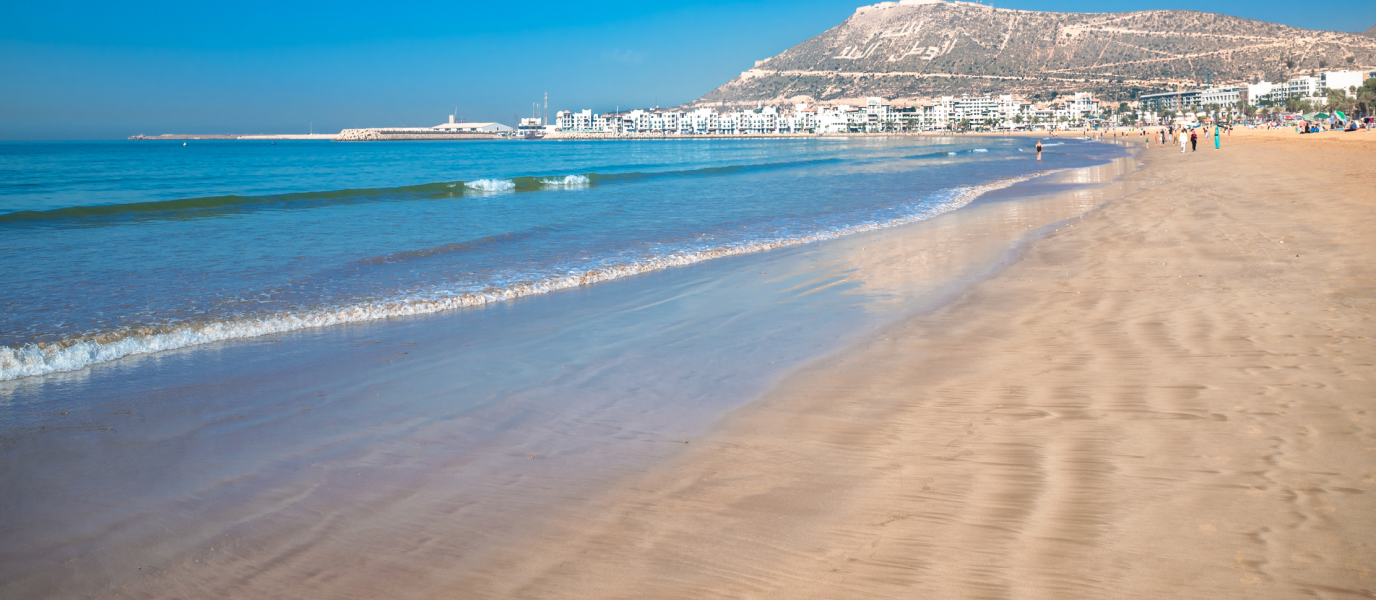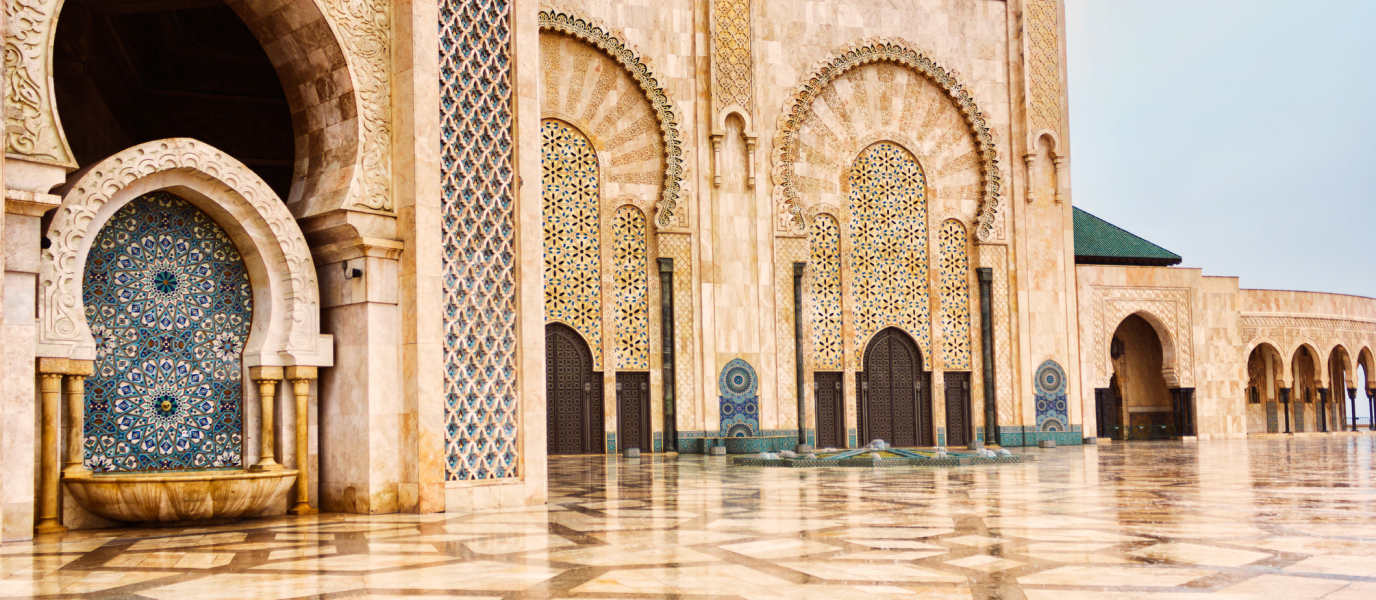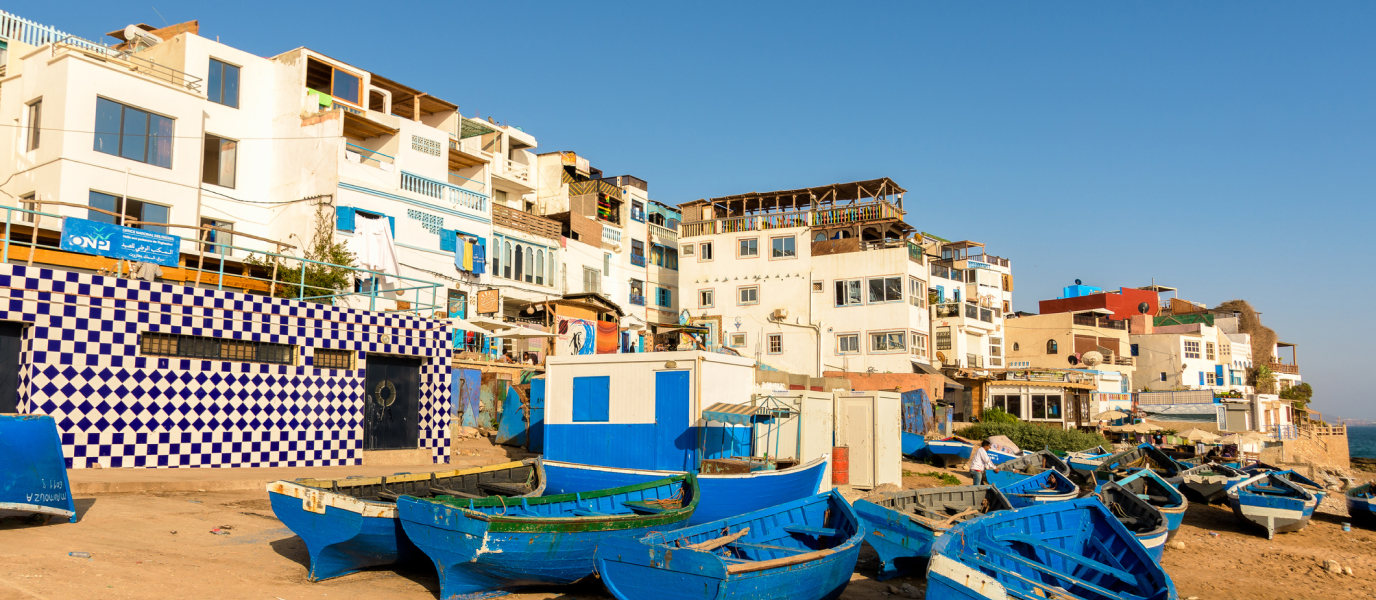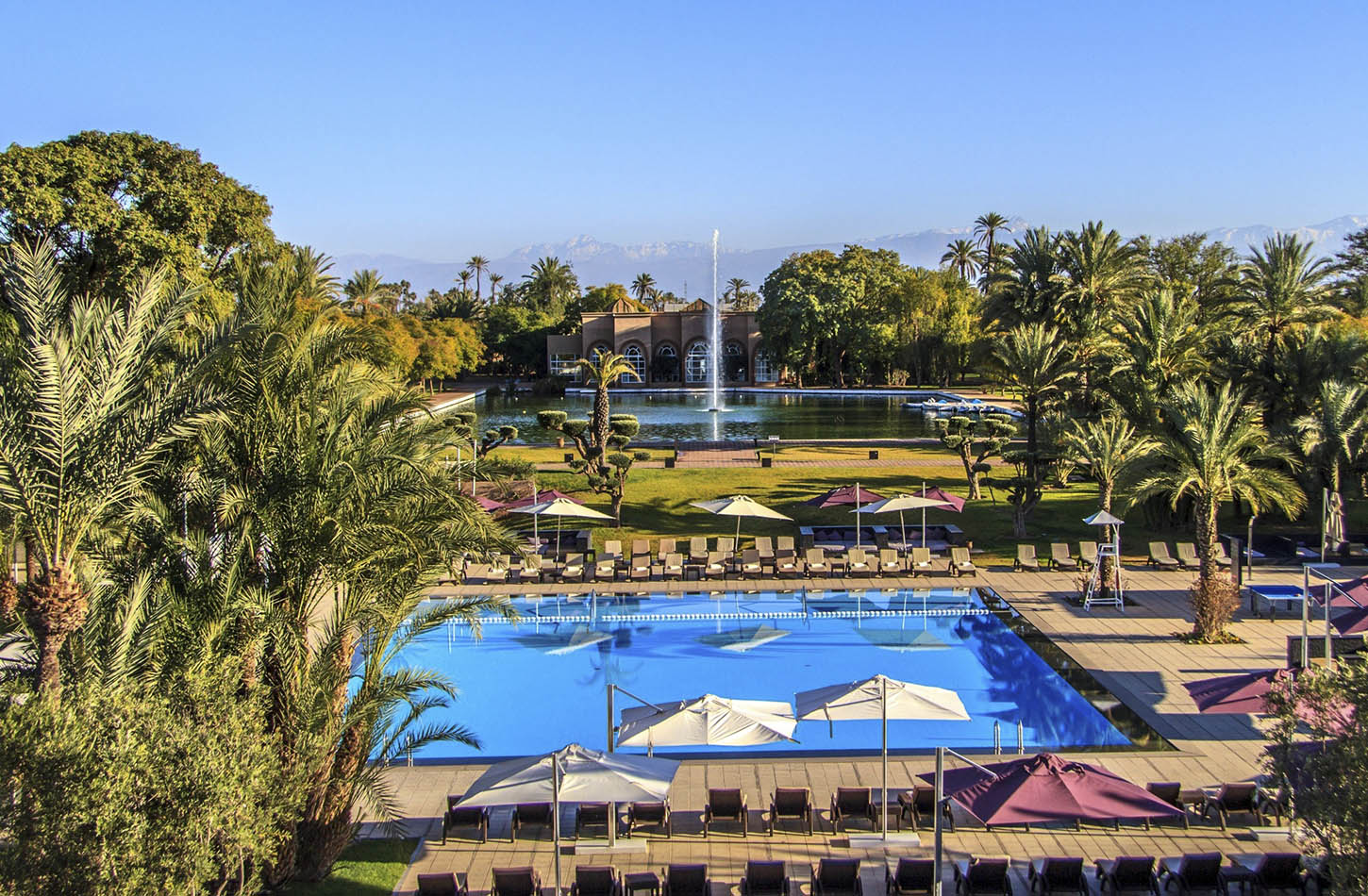The Ouzoud Waterfalls, a little over two and a half hours by car from Marrakesh, are a good excuse to escape, at least for a day, from the hustle and bustle of the imperial city. A natural, if man-made, environment that provides many families in the region with a refreshing break on sweltering summer days.
The Ouzoud Waterfalls, why they’re a must visit
The Ouzoud Waterfalls are the highest waterfall in Morocco, standing at a height of 110 metres. The water falls in several levels, but not in free fall. There are seven waterfalls in total, the most accessible of which is the first one, located near the village of Tanaghmeilt.
In all, there are seven waterfalls fed by the waters that rise in the not so distant peaks of the High Atlas. They can be considered as the headwaters of the Ourika, a watercourse that waters a fertile valley that flows down to the Tensfit river, near Marrakesh.
Although the Ouzoud Waterfalls are a natural area of outstanding beauty and authenticity, the lower part, closest to the village, is quite well developed. Many businesses (restaurants, accommodation, shops, and stalls) have sprung up to take advantage of the huge number of visitors who come here.
Especially when the weather gets hot, as bathing is allowed in the river’s backwaters and also under the waterfalls themselves. In this regard, an eye-catching sight is the restaurants that set up their tables in the riverbed itself, so that customers can have lunch or dinner with their feet in the water.
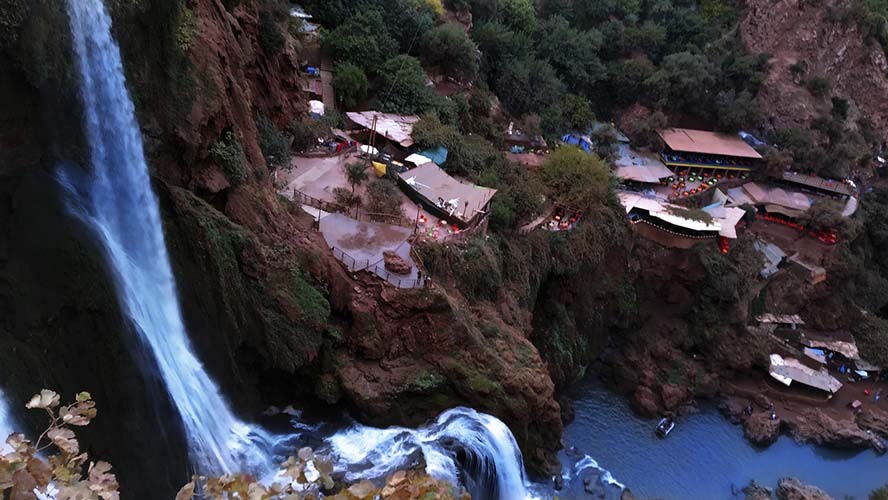
A route through the Ouzoud Waterfalls, what to do in them
The route through the Ouzoud Waterfalls begins at the car park next to the village of Tanaghmeilt. This is a village of characteristic adobe houses, many of which have been transformed into tourist establishments of all kinds.
From the village, simply follow the path that runs parallel to the course of the Ourika River, which is clearly signposted. At a certain point, the route becomes steeper and you begin to climb the over 500 steps that lead down to the lower part of the waterfalls.
All in all, around 20 minutes of walking, and it usually ends up being much longer, as there are usually street vendors selling all kinds of products and it’s unusual not to stop at a shop or souvenir stall along the way.
Once you reach the base of the waterfalls, it’s time for a swim. Although the backwaters have a light chocolate colour, this has nothing to do with their cleanliness, but is rather to do with the fact that they contain many particles of the clayey soil typically found in this area. In any case, no matter how hot it is, the coldness of the meltwater is surprising.
Wild macaques, which are in serious danger of disappearing from the area, are a common sight here and they tend to approach visitors without fear. No doubt in search of easy food.
The more daring can continue on to the seventh of the Ouzoud Waterfalls, a route of moderate difficulty (suitable footwear for mountain hiking is recommended), which takes just over two hours (round trip).
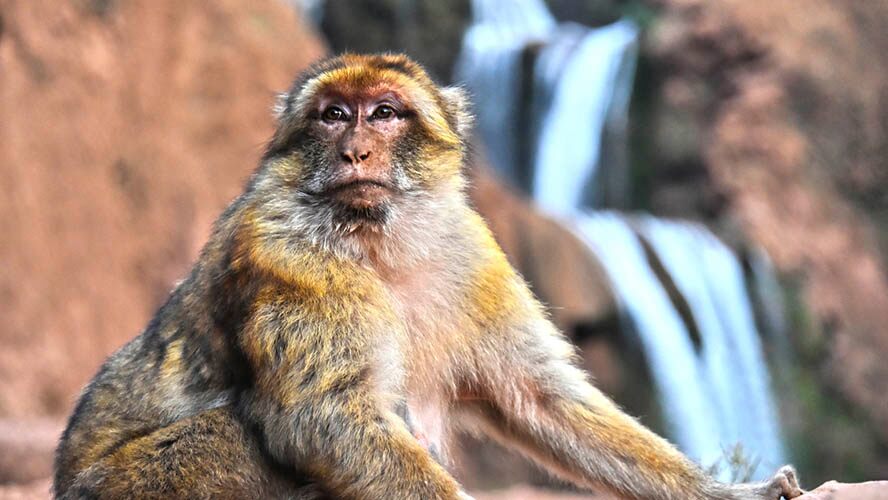
How to get from Marrakesh to Ouzoud
Despite its relative proximity (about 160 kilometres) to Marrakesh, the hike to the Ouzoud Waterfalls takes time (no less than two and a half hours). Moreover, there are hardly any signs on the route to this place. The roads are narrow and winding, and driving in Morocco generally requires some fearlessness.
So the best way to get there is through a company specialising in excursions (a good idea is to ask at your hotel). You can also book the services of a reliable taxi driver.
This option, as well as allowing you to get to Ouzoud comfortably (in summer we suggest you make sure that the taxi has air conditioning), also makes it easier to plan a “tailor-made” journey, stopping at different points along the route and, once you get to Tanaghmeilt, arranging the time of your return departure with the driver.
On arrival in Tanaghmeilt, the taxi driver will usually offer the services of a local guide to take you on foot to the base of the waterfalls. In general, this isn’t necessary, as the route is well signposted.
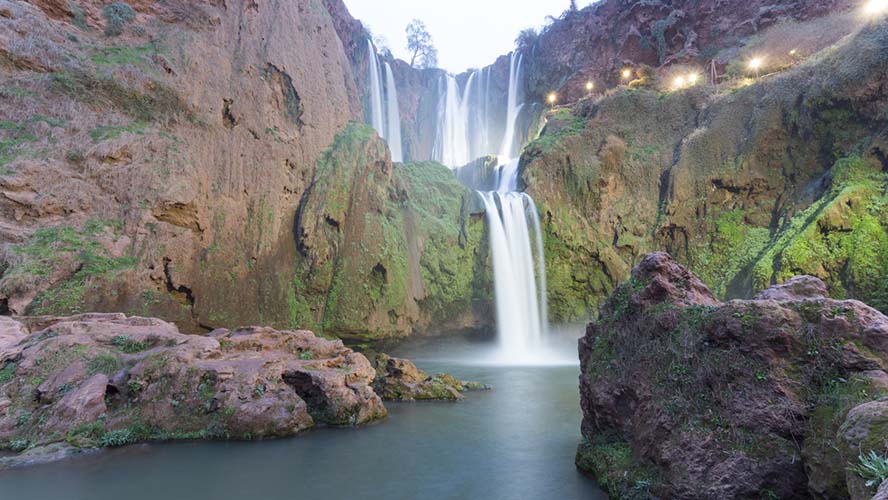
The Ourika Valley
The Ouzoud waterfalls are, in a way, the beginning of the Ourika Valley, a river fed by the thawing of the High Atlas. The waters of this river form a fertile agricultural valley, which almost seems miraculous amidst the arid landscapes typically found in the region.
Further upstream from the waterfalls, towards the south and the mythical mountain range, the landscape becomes more rugged, often in places that are only accessible to well-prepared hikers used to high mountains.
But downstream, the fertility of the valley has given rise to many towns and villages. Every step you take along the Ourika you will find a market, a roadside stall selling juicy melons, watermelons, figs, and other fruits.
Of course, there are also all kinds of handicrafts, and even a cooperative selling argan, an ideal place to buy this precious oil directly from its producers.
Moreover, from almost anywhere in the Ourika Valley you can see the imposing silhouette of Toubkal, the highest peak in Morocco and North Africa, 4,168 metres high.
What to see around Ouzoud
A couple of kilometres from the waterfalls, along a path from the village of Tanaghmeilt, are the Ouzoud springs. A backwater of the river that feeds the famous waterfall and which is one of the best spots for taking a dip in the area. It’s also much less crowded than the “official” route.
What’s more, from here you have one of the best panoramic views of the waterfalls as a whole, as well as enjoying the breathtaking scenery, with the High Atlas as your witness.
To complete the excursion, some 26 kilometres from here, next to the village of Bin el Ouidane, there’s a reservoir around which an area for swimming and a genuine tourist complex have been created, with restaurants, hotels, and leisure complexes with swimming pools and children’s play areas.




































































